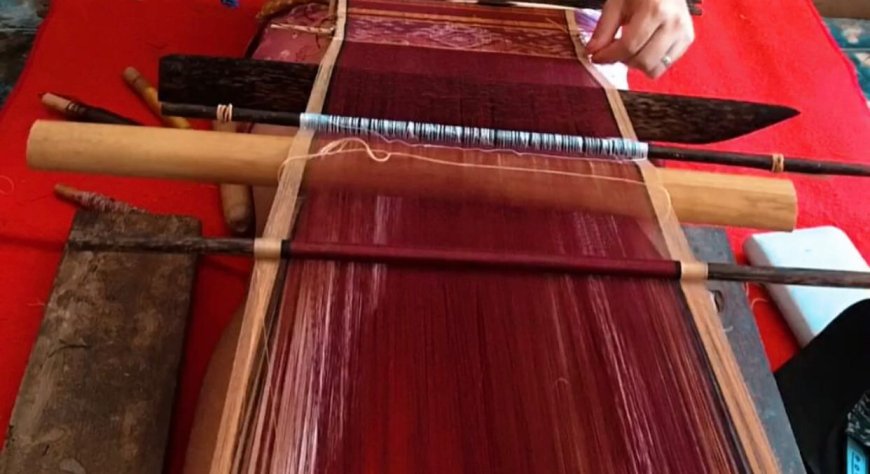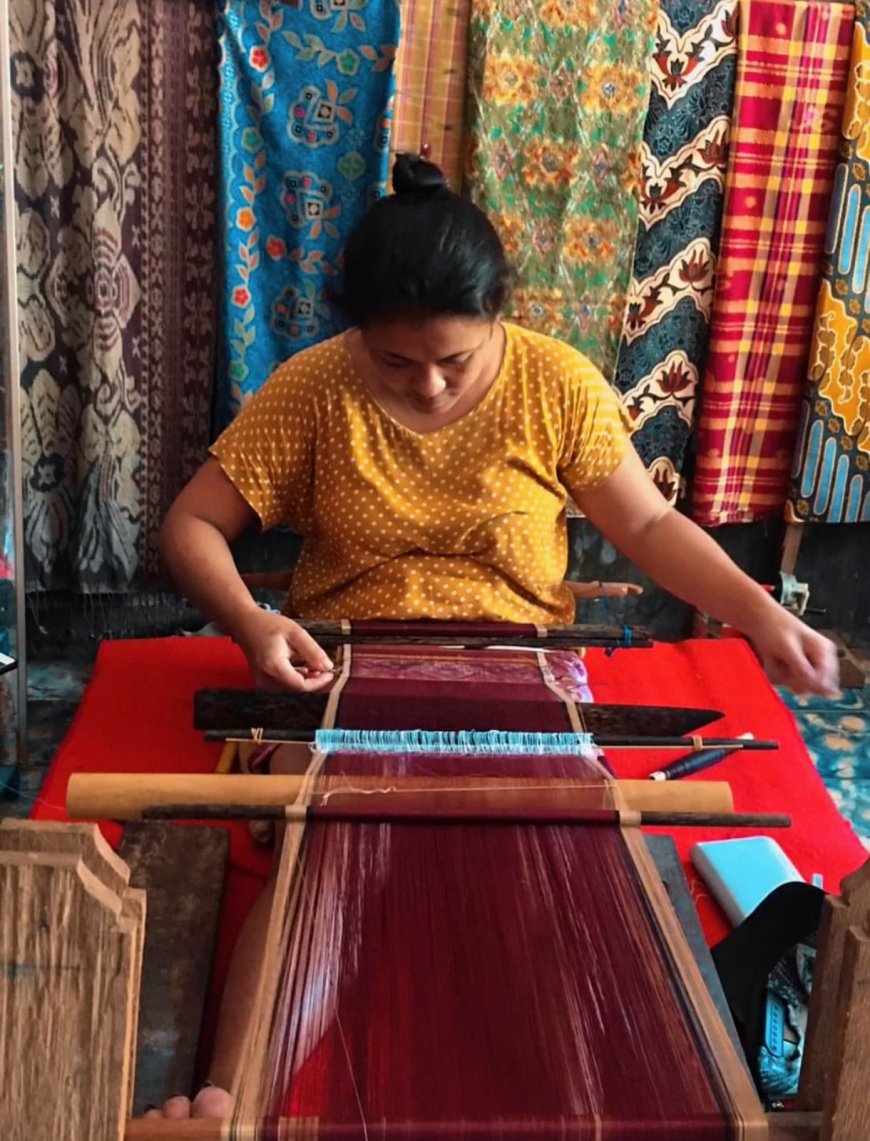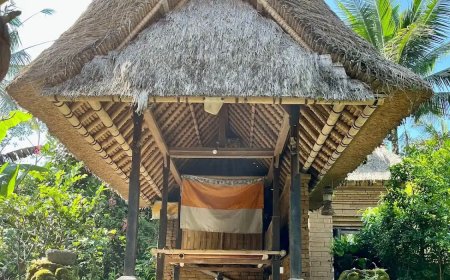Spinning Cultural Strength In Balinese Fabric Fibers, Tenganan Pegringsingan Weaving
The Island of the Gods, Bali, is not only famous for its stunning beaches, but is also steeped in culture and customs that have been passed down from generation to generation. Bali is still tied to its local wisdom, one of which is the Gringsing Cloth from Tenganan Pegringsingan. In this article we will discuss the history, process and uses of the Gringsing cloth.

Gringsing Weaving (Source: Private Collection)
Bali is not only a recreation area or natural tourist attraction, but Bali has a culture that is really interesting for you to know. Bali has an ancient cultural heritage, one of which is the Gringsing Woven cloth. This gringsing ikat woven cloth comes from Tenganan Village, Manggis District, Karangasem Regency, or known as Bali Aga Village. Gringsing cloth is one of Bali's ancient cultural heritages which still survives to this day.
Gringsing comes from two words, gring which means sick and sing which means not. Literally, gringsing cloth is interpreted as a magical cloth that helps the wearer avoid bad things. It is said that the Gringsing cloth was a gift from God Indra, the god who protects humans in Hinduism. The story goes that at that time God Indra was admiring the beauty of the night sky. He was so amazed that he tried to describe his chosen humanity, especially the residents of Tenganan Village or Bali Aga Village.
Tenganan residents learn the technique of weaving gringsing to immortalize the beauty of the stars, moon, sun and other vast expanses of sky. This is where gringsing cloth is created with a feel of deep darkness, like the darkness of night. According to global fabric and textile experts, gringsing woven fabric is classified as a rare woven fabric. Mastery of the magical technique of gringsing can only be found in three locations in the world, namely India, Japan and Indonesian.

Gringsing Weaving Process (Source: Private Collection)
Gringsing weaving is the result of a long process. It starts with spinning cotton into thread, preparing the thread to become dihi and weft threads, tying it to form a pattern or motif, coloring the thread, and combining the dihi thread and weft thread to form a piece of cloth. This series of long and time-consuming processes is a representation of self-control and patience as a spiritual practice.
The weaving process is mebed or separating the cotton fibers from the seeds, nyetet or expanding and cleaning the cotton, ngulung or winding the cotton on a bamboo stalk, to ngantih or spinning the thread using a jantra or cylindrical wooden wheel that is rotated by hand. The process of spinning thread is a process full of patience and precision. Often times, the cotton being spun breaks halfway and needs to be reconnected to make it sustainable.
Gringsing cloth is a very sacred cloth for the people of Tenganan Pegringsingan Village. Gringsing is used with great care, even when it is still in the form of thread. The brushing process is a process to ensure that all the threads are separated before the weaving process begins. This process is done like combing hair. Yarn is considered like hair which needs to be combed carefully so it doesn't break. The brushing movement is the same as combing hair, from top to bottom, and repeated many times until the threads are dry and nothing sticks to each other. And the final process is the process of soaking the thread for coloring.
After you have read the history and process of the Tenganan Pegringsingan woven cloth, now this article will tell you about the procedures for using the gringsing woven cloth. You're curious, right? Come on, look carefully and read the continuation of this article.

Use of Gringsing Cloth (Source: Private Collection)
The procedure for wearing ceremonial clothing is the same as wearing everyday clothing, but the difference is in the use of gringsing weaving. The use of gringsing cloth with various patterns creates a luxurious impression, supported by other attributes in the form of gold and silver headdresses. Men use kamen, kerchief, belt, udeng, creese and don't wear clothes, while women use kamen, anteng. Traditional ceremonies in Tenganan include the ngekehing ceremony (new born baby ceremony), ngetus jambot ceremony (hair cutting ceremony), meajak-ajakan ceremony (ceremony for 10 years old boys), meteruna ceremony (ceremony for boys who are teenagers), Usabha Sambha ceremony (the biggest ceremony in Tenganan village), marriage ceremony.
Tenganan, as one of the Bali Aga villages, maintains the authenticity of its traditions, culture and religion. The people of Tenganan Pegringsingan are very dependent on their original culture which is synonymous with religious rituals. Where the ceremonies and activities they carry out are a form of dedication to God. Pegringsingan woven cloth has a sacred function for the people themselves, namely as traditional clothing as well as a complement to religious ceremonies and can also be used as a dowry or dowry because it has high artistic value so it has an important role in the lives of the people of Tenganan Pegringsingan Village.
So, aren't you curious to visit this place after reading this article? Come on, if you are on holiday in Bali, don't miss visiting one of these places, where this village is the only village that produces traditional Gringsing woven cloth, namely Tenganan Pegringsingan Village.





























































